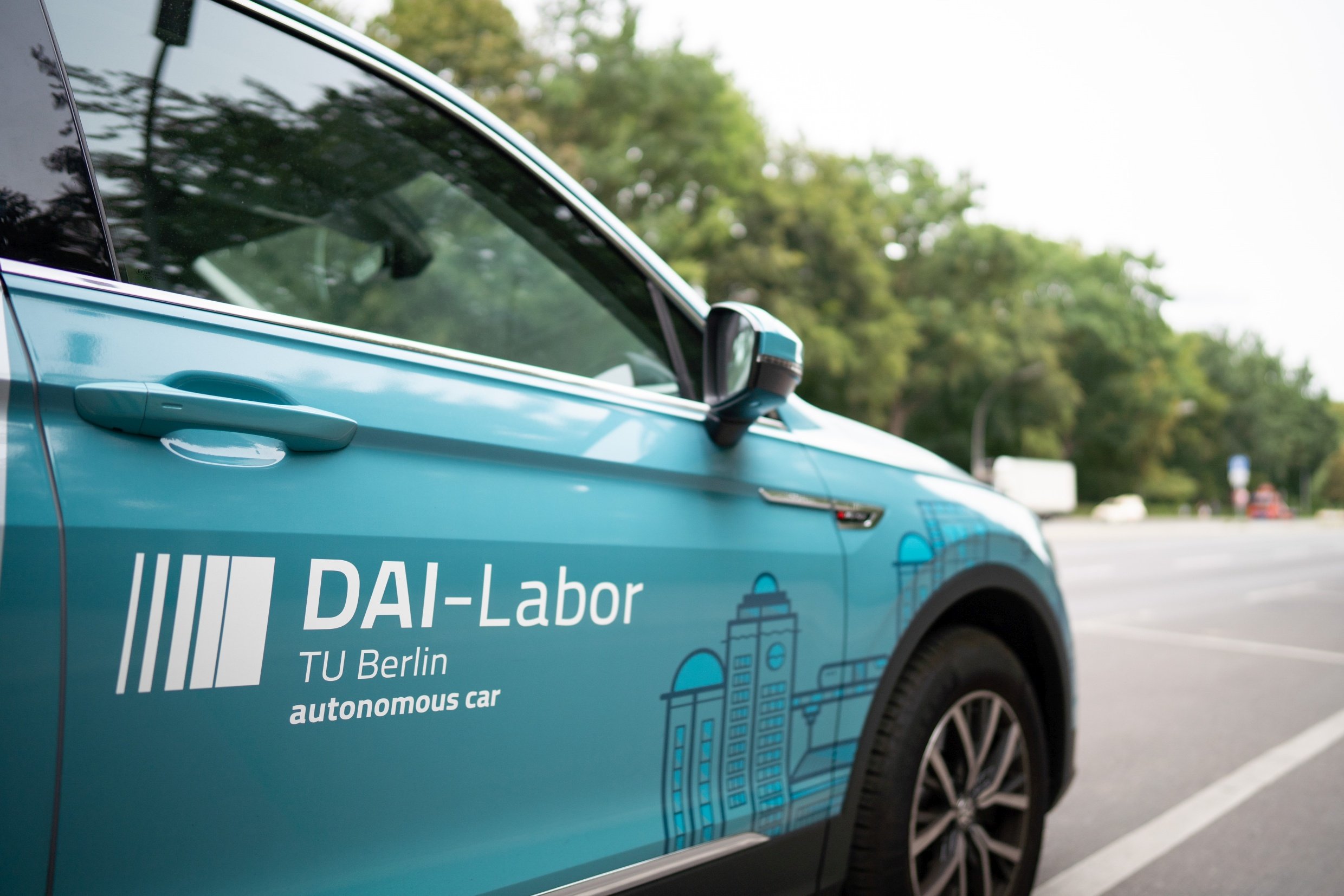
As of September 19, 2019, the busy Berliner Straße des 17. Juni has become a 3.6-kilometer test circuit for automated and network-enabled transport. The digital infrastructure required for this was developed by TU Berlin. For the first time ever, autonomous driving can now be researched and further developed with all of its extensive aspects under real, urban traffic conditions taken into consideration. This particular area, which is regarded as an urban lifeline, poses many challenges for road users.
29 months for development and implementation

From Ernst-Reuter-Platz to Brandenburger Tor, traffic light systems, roundabouts, cycle paths and footpaths, parking lots and entrances and exits must be taken into account. In other words, ideal conditions for a test circuit that examines future technologies of automated and networked transport for improving public traffic flows, environmental conditions and the safety of road users. The DAI-Labor research laboratory and the associated Agent Technologies in Business Applications and Telecommunications department at the Technische Universität Berlin (TU Berlin), are both headed by Professor Dr.Dr. h.c. Sahin Albayrak. He and his research team needed a total of 29 months in order to develop and set up the test circuit. The focus is on vehicle-to-infrastructure communication, the combination of sensors and the use of AI mechanisms. In future, the test circuit will also offer other regional and supraregional companies, as well as research institutions, the opportunity to explore automated and autonomous transport in a real urban environment.
At the core of the project is the DIGINET-PS reference framework. It was designed at TU Berlin and creates the conditions for the test circuit, vehicles and control center to be able to communicate with each other. More than 100 sensors are installed along the test route which measure weather conditions, traffic volume, parking conditions, environmental pollution as well as road conditions. This data is anonymously analyzed and evaluated on the road and in the control center by specially developed software. This enables forecasts to be made across a wide variety of topics. The data is shared with vehicles connected to the network using a communication infrastructure based on ITS-5G and 4G. This makes it possible to improve perception and decision-making process for various critical maneuvers and application scenarios. This innovative intelligent infrastructure allows vehicles to warn or even predict accident-prone situations with cyclists on the road, for example.
Cameras, radar and laser scanners in vehicles
The automated and networked vehicles are equipped with cameras, radar and laser scanners. As a result, information can be collected within 360 degrees around the vehicle, analyzed and exchanged with other automated and networked vehicles. This means that a vehicle is alerted by the control center when a traffic light turns green. They can coordinate with each other and therefore quickly respond accordingly. It is also possible for the intelligent transport systems to recognize other road users as well as pedestrians and react appropriately to each situation.

Professor Albayrak is confident:
“By centralizing the collection, aggregation and analysis of data, we will be able to develop novel, secure solutions for road traffic problems, generate new ecosystems and business models, and create added value”.
Funding by BMVI & Berlin Senate
Funded by the Federal Ministry of Transport and Digital Infrastructure (BMVI), the project contributes to the implementation of the Smart City Strategy of the federal state of Berlin in the area of mobility and supports the federal state’s Digital Agenda. But not only that:
“The insights gained here in Berlin are an important basis for future transport policy decisions,” said Federal Minister Andreas Scheuer, who was also present at the opening of the test circuit.
The Federal Ministry of Transport and Digital Infrastructure has funded the research project with more than 4.6 million euros since the start of the project in April 2017 as part of the Federal Government’s ‘Strategy for Automated and Networked Transport’.
The project has also received support from the Berlin Senate Department for the Environment, Transport and Climate Protection.
Apart from TU Berlin, Fraunhofer FOKUS, the Daimler Center for Automotive IT Innovations (DCAITI),T-Systems International and the Berlin Agency for Electromobility eMO were involved in the development of sensors, vehicle technology and data systems, along with numerous other implementation partners such as Cisco, TÜV Nord and BVG.
This articles may also be of interest to you:
200 Kilometers Test Track for Autonomous Driving in Saarland Saarland
Autonomous driving: solutions for road traffic of the future







